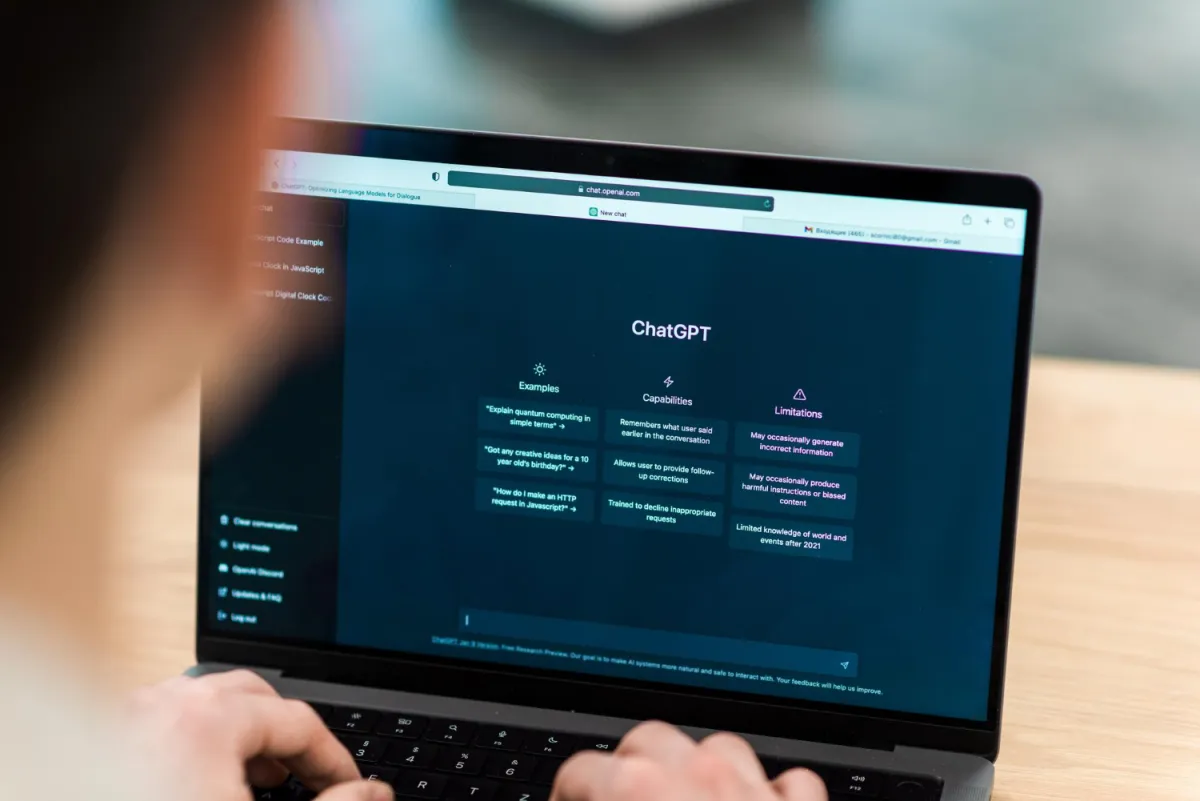Introduction
Imagine you’re stuck finding the right words for your next email campaign. You know how crucial this email is to capture attention, spark interest, and drive conversions. We’ve all been there.
Now imagine having an AI assistant by your side, ready to spark creativity, optimize your copy, and save you valuable time.
That’s where AI comes in, specifically tools like ChatGPT. With AI, you no longer have to start from scratch, spend hours fine-tuning each email, or worry about hitting the right note with your audience.
But how do you use ChatGPT for email campaigns?
That’s exactly what we are going to cover in this guide: how to use AI in email marketing to boost conversions and streamline your workflow.
We’ll break down practical ways to use ChatGPT to enhance personalization, speed up content creation, and ultimately make your email marketing efforts more effective.
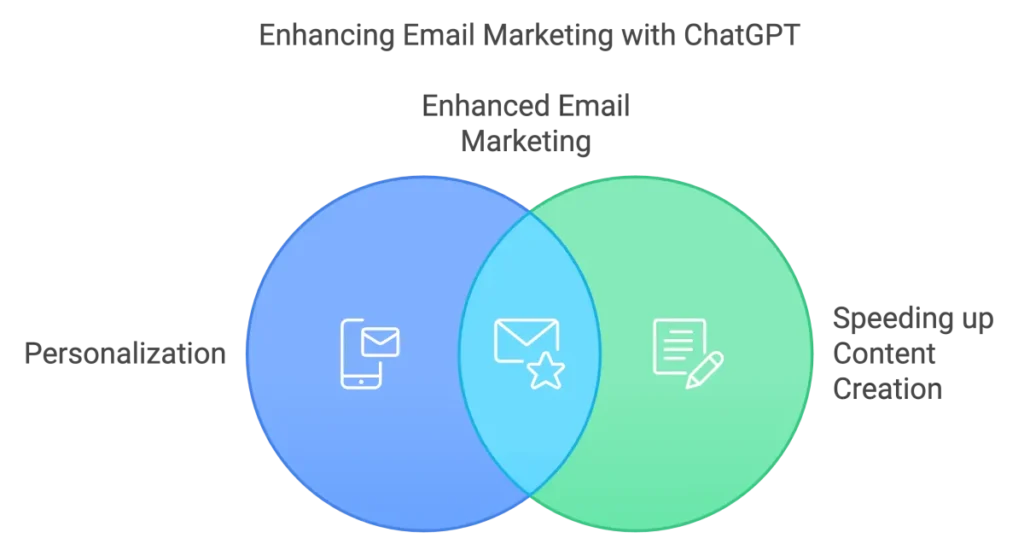
Understanding ChatGPT in email marketing
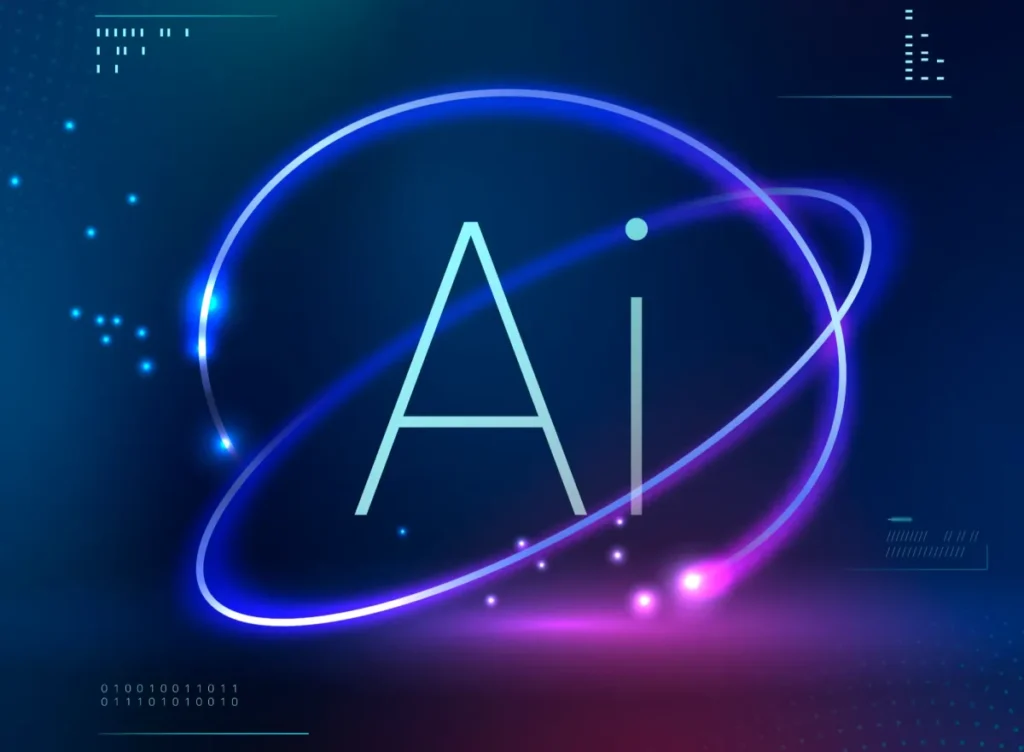
Artificial Intelligence (AI) has made significant strides in reshaping many industries, and email marketing is no exception.
But what exactly does it mean to use AI in email marketing, and how can it impact your campaigns?
At its core, AI refers to technology that can analyze data, learn from it, and make decisions or provide insights based on that data.
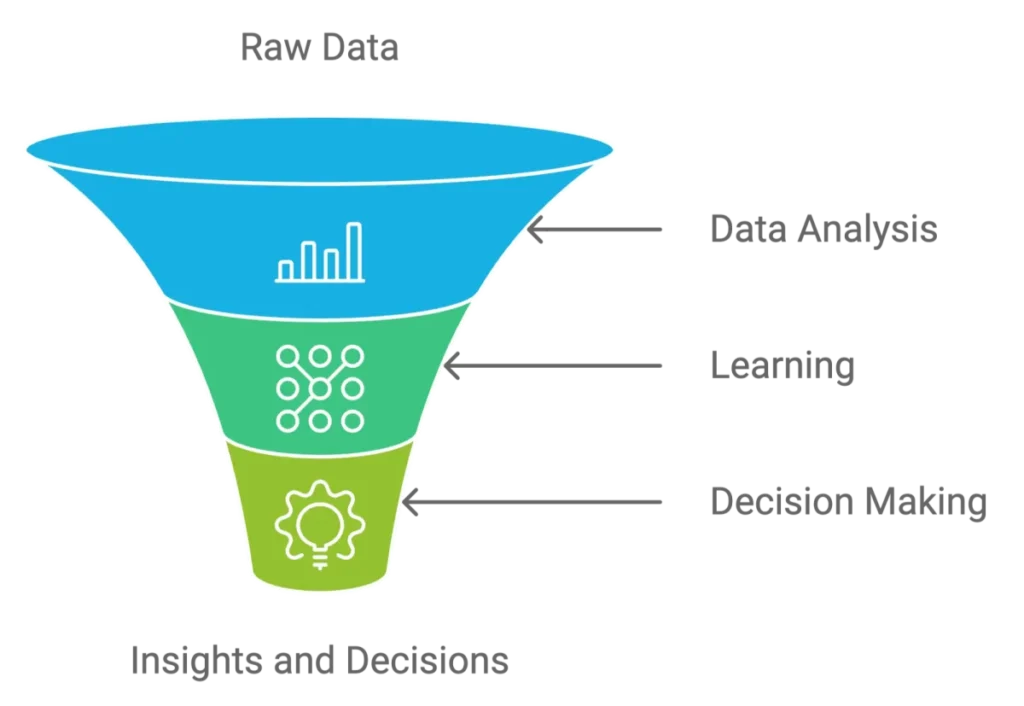
In the context of email marketing, AI tools like ChatGPT can be leveraged to assist in multiple stages of the campaign—ranging from brainstorming content ideas to optimizing messaging for different audience segments.
These tools can help marketers create emails that are personalized, relevant, and most importantly, more likely to convert.
ChatGPT, for example, is a powerful AI tool that can generate text based on the instructions you provide. Whether you need:
- Engaging subject lines
- Creative email copy
- Guidance on structuring an email campaign
ChatGPT can help you come up with ideas faster and produce better results.
By integrating AI into your email marketing strategy, you can save time, improve personalization, and make smarter decisions that connect with your audience.
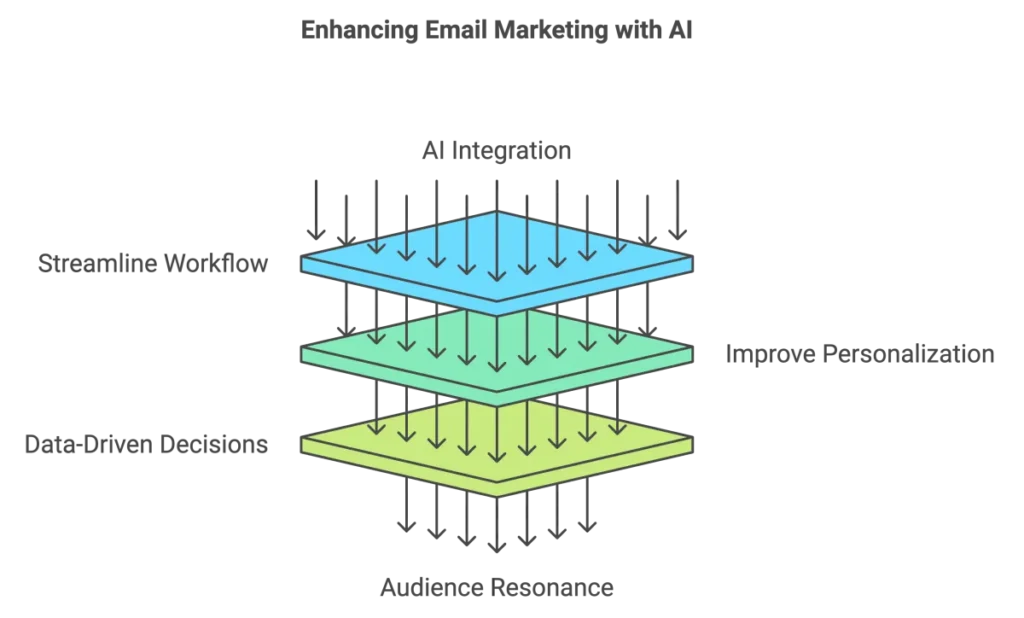
And the best part? You don’t need to be an AI expert to get started—AI email marketing tools are becoming increasingly user-friendly and accessible, allowing even beginners to make a big impact.
Top benefits of using ChatGPT for email marketing
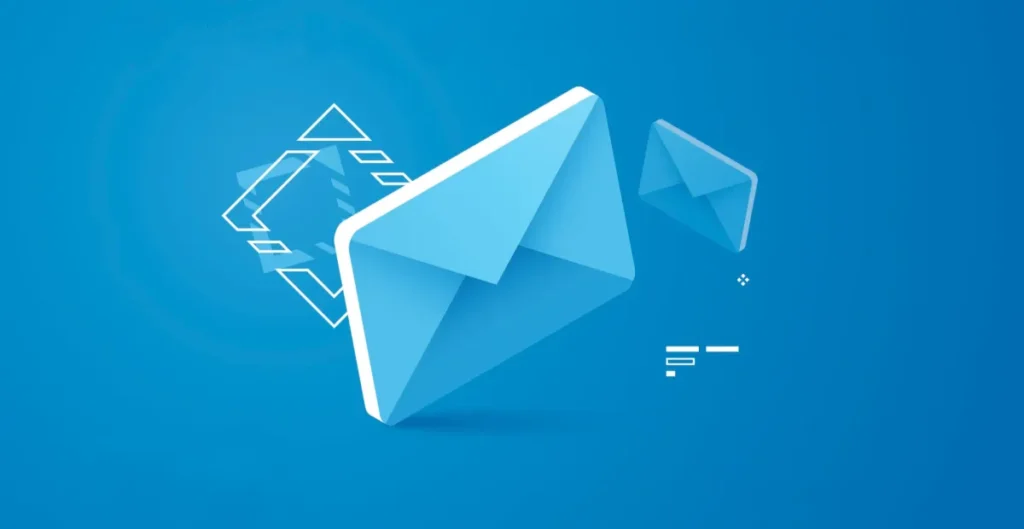
Combining the power of ChatGPT with email marketing platforms can lead to amazing results.
Let’s look at the top benefits that ChatGPT brings to your email marketing strategy:
ChatGPT can improve personalization

Personalized emails drive higher engagement, and ChatGPT makes personalization easy.
ChatGPT can generate tailored content using audience-specific prompts, such as personalized greetings, product recommendations, and tone adjustments, which help build deeper connections with subscribers.
ChatGPT can save time and increase cost efficiency

Writing a perfect email can take a lot of time, but ChatGPT can help speed up the process significantly.
With ChatGPT, you can:
- Quickly generate subject lines
- Draft email bodies
- Create messaging tailored for specific audience segments
This saves time and cost, allowing you to focus more on strategy and creativity instead of repetitive writing tasks.
Use AI for data-driven content optimization

ChatGPT can help optimize content by using insights from past campaign performance, audience behavior, and trends.
For example:
If your analytics show that subject lines with urgency get the highest open rates, you could use a prompt like:
“Generate five subject lines that convey urgency for our limited-time offer.”
This way, you use data to guide the content ChatGPT creates, increasing the likelihood of success.
AI can help increase engagement

ChatGPT helps create engaging content that leads to higher open rates and click-through rates.
Whether it’s generating catchy subject lines, personalized email copy, or calls to action, ChatGPT helps you connect with your audience more effectively.
You can also experiment with different approaches to see what works best.
Example prompt:
“Generate five variations of subject lines for our upcoming summer sale, focusing on curiosity, urgency, and personalization.”
This allows you to quickly create multiple content ideas and test which approach resonates best with your audience.
ChatGPT can help enhance ROI

Using ChatGPT can lead to a better return on investment (ROI).
By generating targeted, personalized content that improves engagement and conversions, you can get more value from your email marketing campaigns, all while saving time on content creation.
Step-by-step guide to use Chat GPT in your email marketing

Now that we’ve explored the benefits of AI in email marketing, let’s dive into practical ways to integrate AI into your campaigns. Here’s a step-by-step guide to help you make the most of AI tools like ChatGPT:
Step 1: Speed up content creation with ChatGPT prompts
AI can be your brainstorming partner, giving you a starting point for different parts of your emails. From subject lines to the email body and calls to action, AI can generate drafts in seconds.
Try this prompt:
“Write five subject lines for a product launch email. The product is innovative, has a limited-time discount, and is designed to make remote work easier.”
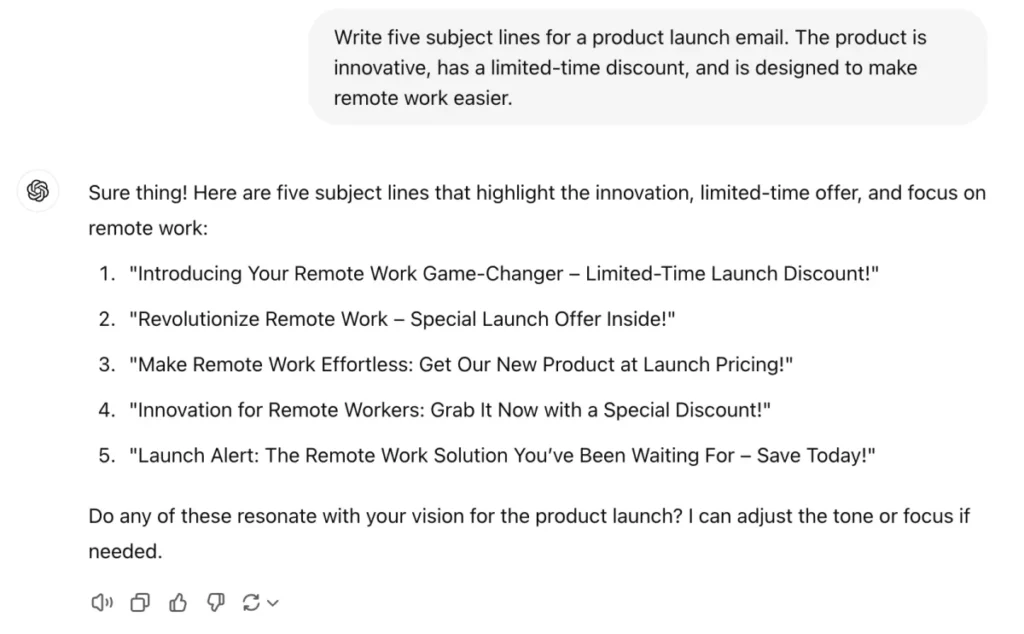
Why this works:
- Provides clear instructions to generate subject lines.
- Includes specific details about the product’s key features, target audience, and offer.
This kind of prompt helps guide ChatGPT to generate more targeted ideas, saving you time in the process.
Tip: Provide context to ChatGPT
To get the best results, give ChatGPT detailed information about your campaign and company. The more context you provide, the more aligned the output will be with your goals.
Step 2: Optimize email content with ChatGPT
AI can help optimize your content by generating multiple options for key elements like subject lines, email bodies, and preheaders.
Wondering what all makes up an email? Check out our post: 10 Important Parts of an Email
Experiment with different styles—such as using questions, urgency, or curiosity—and then A/B test to see which resonates best with your audience.
Prompt example:
“Generate three variations of subject lines, three email body introductions, and three preheaders for our upcoming product promotion. Use different styles for each—urgency, a question, and curiosity. The goal is to identify which style resonates best with our audience.”
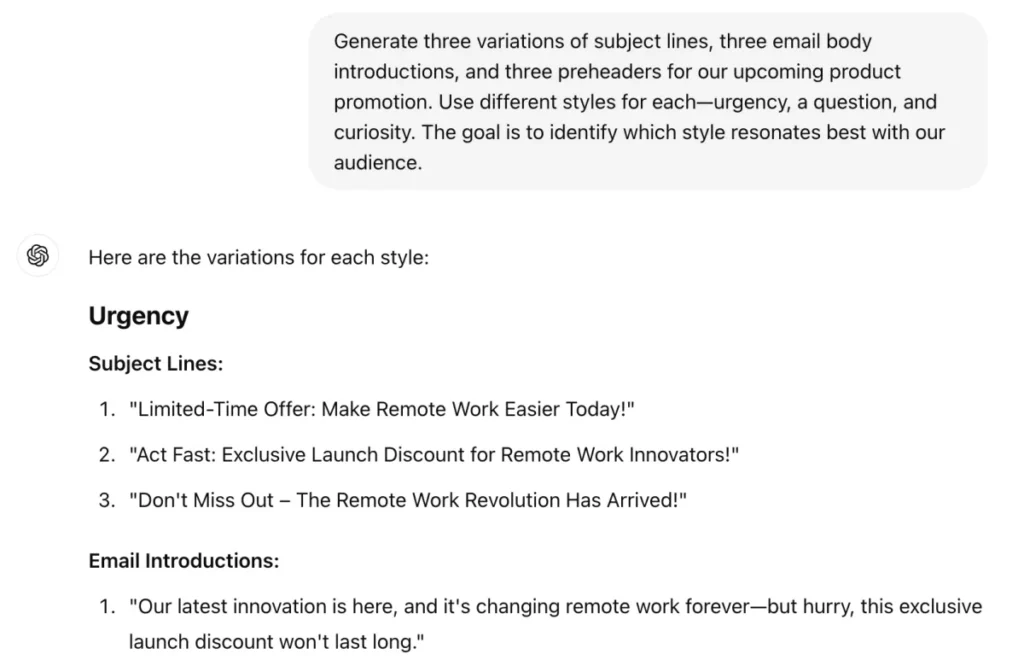
This prompt helps ChatGPT provide multiple options, allowing you to test and determine which content performs best.
Step 3: Use AI for audience segmentation
Personalization starts with proper audience segmentation. AI can analyze customer data like behavior, demographics, and past interactions to help you group your audience effectively.
Example prompt:
“Based on customer data, generate audience segments for an email campaign. Data includes purchase frequency, engagement levels, and demographics. Suggest segments like frequent buyers, recently engaged subscribers, and inactive customers, with messaging ideas for each.”
Caution: Always anonymize data to protect customer privacy.
Step 4: Use AI to conduct A/B testing
AI-generated content can be invaluable in A/B testing. Create multiple variations of your subject lines, body content, or call-to-action buttons, and use A/B testing to determine which version works best.
Prompt example:
“Generate two variations each for the subject line, email body introduction, and call-to-action button for an upcoming promotional email. The first version should emphasize urgency, while the second version should focus on a friendly, personalized tone.”
This allows you to test multiple versions of your content and identify what resonates most with your audience.
Step 5: Leverage ChatGPT for data analysis
AI doesn’t just help you write content—it can also help you improve it using insights from past campaign performance.
How to use ChatGPT for data analysis:
- Describe the data context: Summarize past campaign data (e.g., open rates, click-through rates). ChatGPT can help make sense of the data, spot patterns, and suggest improvements.
- Ask for recommendations: If you’ve already analyzed the data (e.g., “emails sent on Wednesdays at 10 AM have higher open rates”), prompt ChatGPT for actionable recommendations based on these insights.
Data analysis prompt examples:
- “Our open rates are highest on Wednesdays and Fridays, and click-through rates are best when including a special offer. Suggest an email strategy to maximize engagement.”
- “Our last campaign had a 20% open rate but a low click-through rate of 5%. Suggest improvements to the CTA or email structure to boost click-through rates.”
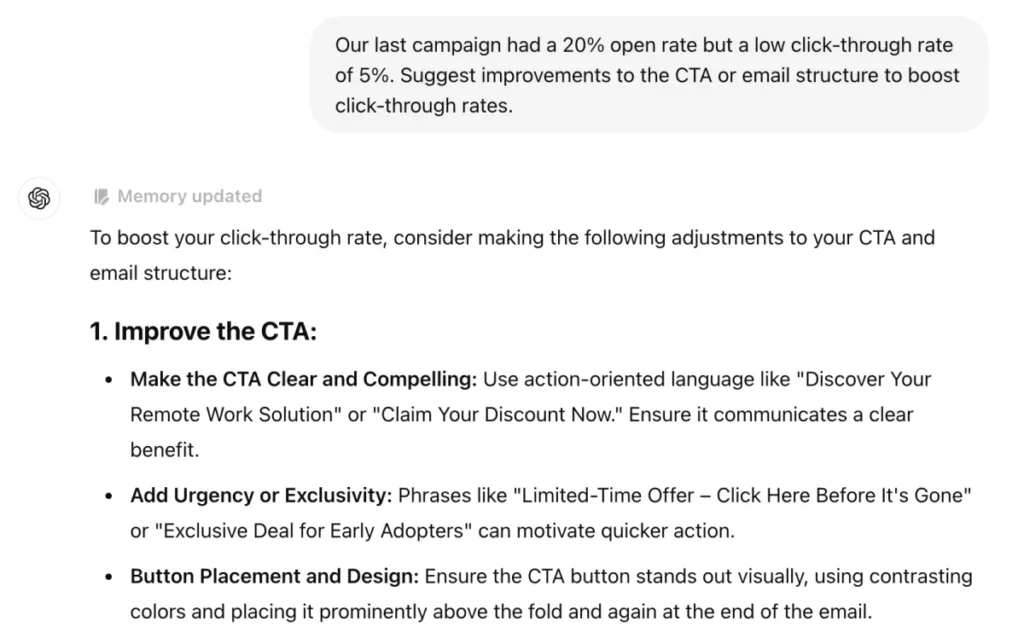
By integrating these techniques, you can create a more effective, personalized email marketing strategy that connects with your audience.
AI prompt examples for different stages of email marketing

Using the right prompts is key to maximizing the power of AI in email marketing. Here are prompt examples for various elements of email marketing:
Subject line prompts
The subject line is one of the most important parts of your email.
Here are some prompt ideas:
- “Generate 5 subject lines for a limited-time offer on [your product/service].”
- “Create a list of subject lines for an abandoned cart email for [your company].”
- “Suggest subject lines for a newsletter announcing new features of [your product/service].”
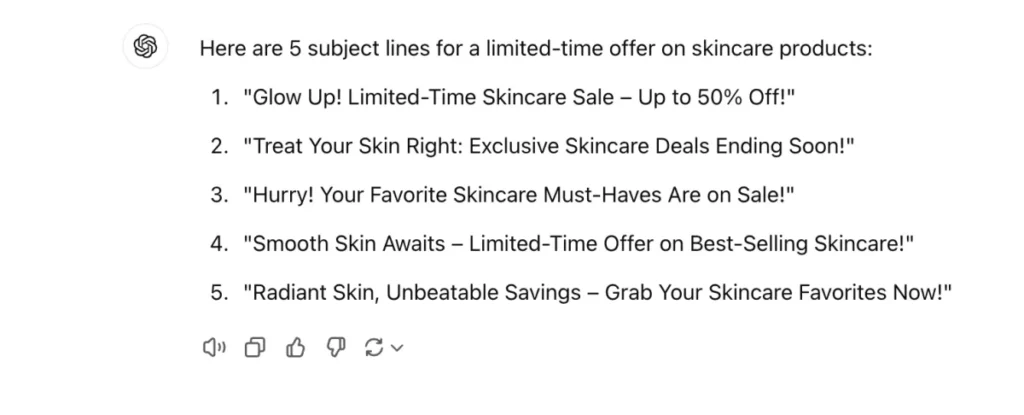
Email body prompts for ChatGPT
The email body needs to engage subscribers, convey value, and encourage them to take action.
Here are examples of prompts you can use:
- “Write an introduction for a welcome email for new subscribers to [your company].”
- “Generate body content for an email promoting special holiday discounts on [your product/service].”
- “Create a short and catchy body paragraph for an email about a product launch for [your product/service] with limited-time benefits.”
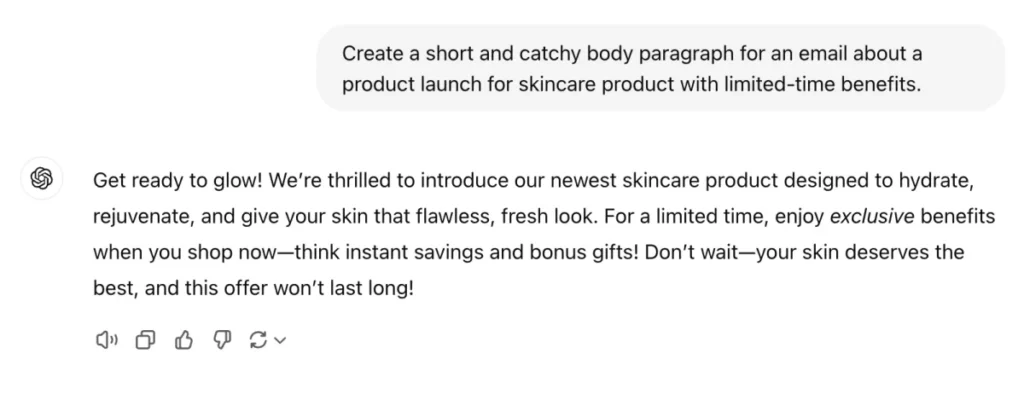
Call-to-Action (CTA) prompts for ChatGPT
A strong call to action can make all the difference in the effectiveness of your email.
Here are prompt examples for generating CTAs:
- “Generate a short CTA for a back-in-stock email for [your product/service].”
- “Create a CTA for an abandoned cart email for [your company].”
- “Write a CTA for a flash sale email for [your product/service].”

Re-engagement prompts to Use with ChatGPT
Re-engagement emails are meant to reconnect with subscribers who haven’t interacted in a while.
Here are prompt examples for re-engaging inactive subscribers:
- “Generate content for an email offering a discount to win back inactive customers for [your company].”
- “Create a call to action for a re-engagement email inviting subscribers to update their preferences with [your company].”
- “Write a subject line for an email targeting inactive subscribers with an exclusive offer for [your product/service].”

Segmentation and personalization prompts for ChatGPT
Using AI to generate personalized content for different audience segments can increase engagement.
Here are some prompt examples:
- “Write a personalized email body for loyal customers of [your company], thanking them for their support and offering an exclusive discount.”
- “Generate an email introduction for new subscribers who have shown interest in [your product/service category].”
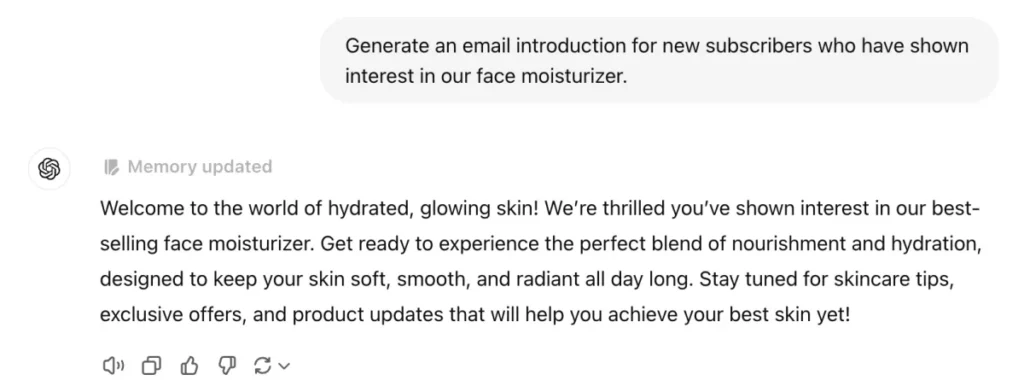
By using prompts like these, you can harness AI’s creative capabilities to produce impactful content for every stage of your email campaign.
The key to success is providing enough context to ensure the generated content meets your goals. ChatGPT can give you a strong first draft, but adding your personal touch will take it to the next level.
Editing AI-generated content is much easier than starting from scratch, saving you time and effort.
Tips for successfully using ChatGPT in your marketing

Successfully integrating ChatGPT into your email marketing strategy requires more than just using the tool—it’s about ensuring ChatGPT works effectively with your brand and objectives.
Here are some tips to make sure your ChatGPT-generated content hits the mark:
1. Provide clear context for better results
ChatGPT performs best when given clear and detailed prompts.
Always provide context about your audience, campaign goals, and the type of tone or message you want to convey.
The more information you include, the better ChatGPT will be at crafting content that resonates with your audience.
Example: Instead of asking, “Write a welcome email,” try: “Write a warm welcome email for new subscribers interested in male skincare products, offering a 10% discount on their first purchase.”
2. Align ChatGPT content with your brand voice
Your brand voice is what makes you unique. ChatGPT-generated content can serve as a great starting point, but it’s crucial to fine-tune it to ensure alignment with your brand’s personality.
Whether your brand voice is formal, playful, or educational, adjust the AI’s suggestions to match it.
To help ChatGPT understand your brand voice, consider uploading examples of content you have written previously. This will help the AI produce results that are closer to your expectations.
3. Test and refine continuously
ChatGPT-generated content can be highly effective, but continuous testing is key to optimizing your strategy.
Use A/B testing to experiment with different versions of subject lines, CTAs, or body text to find what works best.
ChatGPT can quickly generate variations, but the insights you gather from testing will help you refine your approach over time.
4. Establish a feedback loop
ChatGPT thrives on feedback. Track key metrics, such as open rates and click-through rates, and use this data to adjust your ChatGPT prompts and strategies.
This feedback loop will enable ChatGPT to better understand what resonates with your audience, leading to more effective content.
5. Combine human insight with AI creativity
While ChatGPT is powerful, human insight is irreplaceable. Use ChatGPT to kickstart ideas and create drafts, but rely on your expertise for the final touches.
Blending ChatGPT’s capabilities with your knowledge will produce emails that truly resonate with your audience.
6. Monitor content for relevance and quality
ChatGPT is efficient, but it’s not infallible. Always review AI-generated content for accuracy, relevance, and quality. Ensure that the content reflects your brand values, speaks appropriately to your audience, and doesn’t contain any errors that could impact your credibility.
Selecting the right email marketing platform for AI integration
To get the most out of AI-generated content, it’s important to choose an email marketing platform that integrates well with AI tools. DailyStory is one such platform that can help you enhance your email marketing strategy using AI.
Conclusion
Incorporating AI into your email marketing strategy isn’t just about keeping up with trends—it’s about transforming how you connect with your audience and deliver value.
Tools like ChatGPT empower you to create personalized content more efficiently, allowing you to focus on the strategic aspects of your campaigns while improving engagement and conversion rates.
By pairing ChatGPT with a platform like DailyStory, you can unlock the potential of AI to automate repetitive tasks, streamline content creation, and provide tailored messaging that truly resonates with your subscribers.
The synergy between AI-driven insights and human creativity can elevate your campaigns, making them more impactful and relevant.
Now is the perfect time to explore how AI can revolutionize your marketing efforts.
Consider experimenting with AI-driven content today and witness the difference it can make in improving your efficiency, engagement, and overall results.
Ready to take the next step? Sign up for a free trial with DailyStory and see how AI can bring your email marketing to the next level.
FAQs
To help you get started with AI-powered email marketing, here are some common questions and answers about using AI in your campaigns:
How can AI help me boost my email open rates and click-through rates?
- AI helps improve open rates by generating engaging subject lines that capture attention, while its data analysis capabilities allow you to optimize the timing and personalization of emails. For click-through rates, AI can create compelling calls to action and content tailored to specific audience segments, making it more likely that recipients will engage.
Can I use AI to create A/B testing for my email marketing campaigns?
- Absolutely! AI is great for generating multiple variations of subject lines, body content, or calls to action, which can be used in A/B testing. Platforms like DailyStory allow you to easily test these variations and see which performs best, helping you refine your campaigns for maximum effectiveness.
How do I ensure that AI-generated content aligns with my brand’s voice and style?
- AI tools like ChatGPT provide a great starting point, but it’s crucial to fine-tune the generated content to ensure it matches your brand’s voice. Be specific with your prompts, and always review and edit the content to align it with your brand’s tone and messaging. Additionally, you can upload documents to ChatGPT that highlight your brand voice. Doing so will result in more tailored content.
Can AI help me segment my email list and create targeted campaigns?
- Yes! AI can analyze customer data to help you create precise audience segments. By understanding behavior patterns, demographics, and past interactions, AI can assist in creating highly targeted campaigns that resonate with specific groups, improving engagement and conversion rates.
Is it difficult to integrate AI into my existing email marketing setup?
- Not at all! AI tools are becoming increasingly user-friendly, and platforms like DailyStory are designed to make integration as seamless as possible. DailyStory’s features work well with AI-generated content, allowing you to enhance your campaigns without needing extensive technical knowledge.
